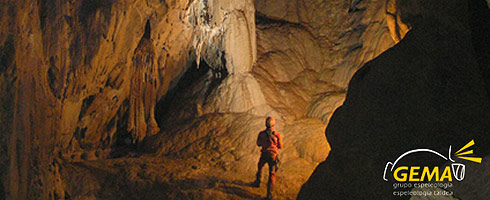Parque Natural de Urkiola · Ayuntamiento de Abadiño
Situación
Menú principal

Most of the Urkiola mountains are made of limestone. They are relatively “young” as they were formed around 50 million years ago, which is little time compared to the age of the Earth (over 3,500 million years). The limestone originally came from huge coral beds made up of the remain of molluscs and crustaceans, submerged under a huge sea. As the sea level fell, part of those coral beds slowly sedimented and fossilised resulting in huge limestone rock masses. Subsequently and thanks of the folding of the earth’s crust, caused by the very powerful and constant tectonic movements, long mountain ranges, as they we know them today, were formed.
These majestic rocky mountains are not as hard and compact as they seem. The rain dissolves them drop by drop, by a chemical process that cannot be seen, but which is inevitable over time.
The water acquires the carbonic anhydride from the atmosphere and becomes a low intensity acid rain, which, dissolves the calcium carbonate when it falls on the limestone and seeps through the cracks and fissures, where it gradually begins to deposit calcium bicarbonate on the roofs, walls and floors. This creates stalactites, stalagmites, flowstones and other types of formations.
The cavities created by water may be of various types:
They also have different aspects and landscapes inside them:
Water creates many formations:
*On average, it takes 100 years to form a centimetre of the stalactites or any other formations.
2006 - 2007 © Anteiglesia de Abadiño Town Council - All rights reserved